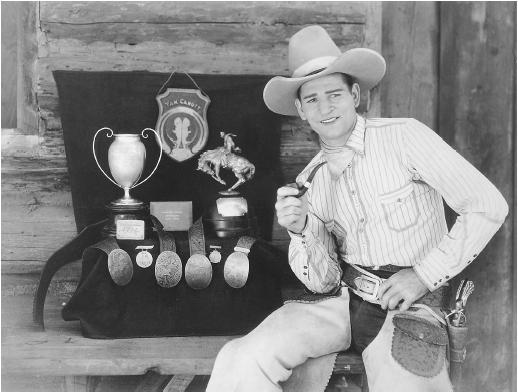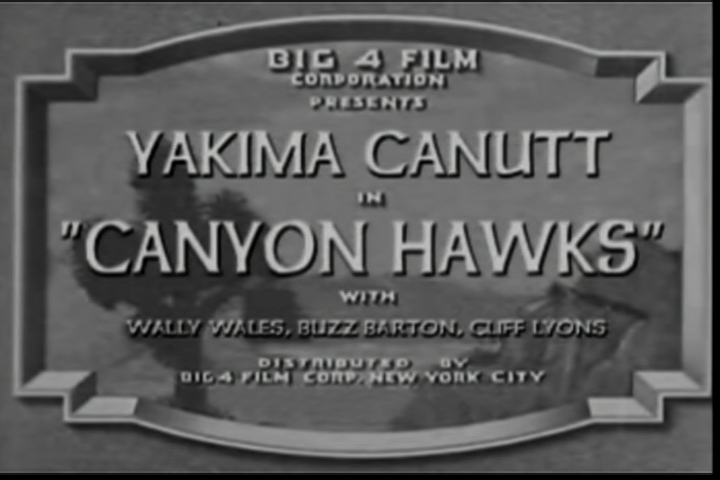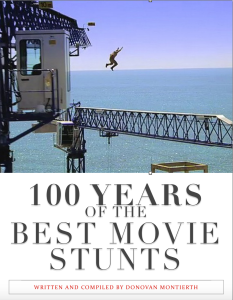There’s a scene in this one where Yak drives an open wagon driven by two horses straight down a precipitous hill that just blows the mind! The scene is shot with a group of men on horses watching from the top, obviously afraid of riding their own single horses down the hill – let alone a wagon with two horses attached – and Yak sitting in the seat in the middle at the front! Also, just watching Yak handle his six-shooters is like watching a Wild West Show.
When rodeo riders invaded Hollywood, they brought a battery of rodeo techniques that Canutt would expand and improve, including horse falls and wagon wrecks, along with the harnesses and cable rigs to make the stunts foolproof and safe. Among the new safety devices was the ‘L’ stirrup, which allowed a man to fall off a horse without getting hung in the stirrup. Canutt also developed cabling and equipment to cause spectacular wagon crashes, while releasing the team, all on the same spot every time. Safety methods such as these saved film-makers time and money and prevented accidents and injury to performers.
It was these early movies where Yakima met John Wayne. Canutt taught Wayne how to fall off a horse. Canutt and Wayne pioneered stunt and screen fighting techniques still in use. The two worked together to create a technique that made on-screen fight scenes more realistic. Wayne and Canutt found if they stood at a certain angle in front of the camera, they could throw a punch at an actor’s face and make it look as if actual contact had been made. Much of Wayne’s on-screen persona was from Canutt. The characterizations associated with Wayne – the drawling, hesitant speech and the hip-rolling walk – were pure Canutt. Said Wayne, “I spent weeks studying the way Yakima Canutt walked and talked. He was a real cowhand.”
Canyon Hawks (1930) was directed by Alan James (as Alvin J. Neitz) and J.P. McGowan for National Players.
Things to look up (click on item to go to IMDB):
Glossary of film terms as defined by Wikipedia:
- Gunspinning – This refers to the old west tradition and Hollywood legend of a cowboy gunslinger twirling his pistol around his trigger finger. Gunspinning is a western art such as trick roping, and is sometimes referred as gunplay, gun artistry, and gun twirling. Gunspinning is seen in many classic TV and film Westerns, such as Shane and The Good, the Bad and the Ugly. The majority of gunspinning is seen as a precursor to putting the gun back in its holster. It may be used as a fancy ending to a trick shot, or just to impress or intimidate an opponent. Watch Kirk Douglas in Man Without a Star if you want to see someone really good at it. Douglas said later in one of his autobiography’s, “In my favorite scene, I twirled a gun; flipped it into the air, from side to side, behind my back, and fired it. This was basically juggling, with some additions. We filmed it in one take, no cuts, so you could see that there was no magic, no special effects, to it.”


